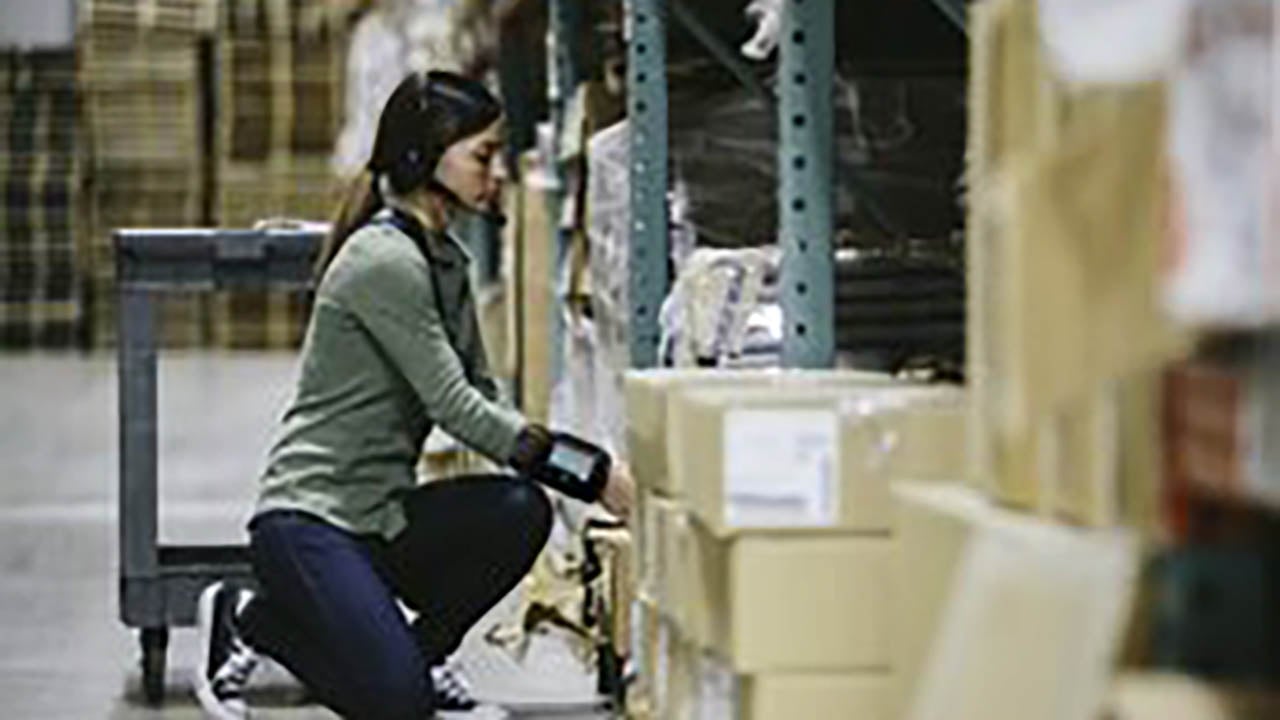It’s been over a year since the COVID-19 pandemic completely disrupted the global supply chain, and only a few months since I wondered if I’d ever see a fully-stocked aisle of paper products again. The pandemic made it abundantly clear how globally interconnected and complex supply and demand has become, and this historic shock exposed vulnerabilities across the entire manufacturing process—posing significant challenges to those across the supply chain ecosystem. Businesses spanning all sectors were forced to rapidly address existing problems and redefine their supply chain strategies to become more connected and resilient, with many increasing investments in digital transformation and the front-line worker experience (EX).
This trend isn’t completely surprising, though.
In a shifting market with constant disruption, digital technologies remain the biggest accelerator for growth, efficiency, and innovation. For example, the retail sector, which saw exponential growth in online spending and e-commerce in 2020, has aggressively accelerated adoption of digital tools and omnichannel capabilities to enable new ways of working and offer more customer-centric services, like in-store or curbside pickup and home delivery. And during the first three industrial revolutions, spanning from the turn of the century to the early 2000s, the supply chain was at the forefront of technological innovation.
While logistics and distribution have been quick to digitize in more recent years, other supply chain sectors, like manufacturing, have been slow to adopt digital transformation initiatives. In 2020, this changed dramatically, with warehousing and manufacturing organizations eager to redefine operating models and make the shift to digital.
THE GROWING DEPENDENCY ON DIGITAL TECHNOLOGIES
Digital transformation enables businesses to improve their supply chain operations of today and build long-term resiliency for tomorrow by expanding their ability to quickly adapt and recover from disruption. However, this journey requires organizations to reevaluate their current supply chain strategies, establish new long-term digital strategies, and begin implementing new technologies and processes.
According to the 2021 MHI Annual Industry Report, 85% of supply chain leaders expect digital to be the predominant supply chain model over the next five years, with 49% already accelerating their spend on digital technologies. MHI reported a notable increase in investments across cloud computing, inventory optimization, sensors, robotics automation, and predictive analytics. Mobile and wearable technologies also saw a substantial increase in terms of supply chain investments.
While advanced Industry 4.0 technologies like blockchain, artificial intelligence (AI), drones, machine learning, and Industrial Internet of Things (IIoT) are still evolving and several years away for many organizations, mobile computers, barcode scanners, and wearable devices remain an easy and cost-effective way for supply chains to quickly accelerate digitization efforts. Unlike paper-based systems and fixed computer terminals, mobile and wearable technologies give multiple supply chain stakeholders real-time visibility into their inventory, assets, and people as they make it easy to efficiently and accurately capture and share data. In fact, Gartner predicts that “up to 70% of new mobile investments over the next five years will be for front-line workers.”
Leading supply chain organizations are also combining traditional and cutting-edge technologies to create seamless omnichannel experiences across their ecosystem. For example, mobile devices with push-to-talk capabilities facilitate fast voice communication and collaboration among team members. And heads-up displays that provide real-time guidance via augmented reality (AR) applications are being used to improve manufacturing processes across the plant floor, warehouse, and field by delivering hands-free instructions, visual diagrams, and reference materials directly to the workers’ line-of-sight. Organizations are also leveraging AR and virtual reality (VR) technologies to provide new or less-experienced workers with easy access to remote experts and immersive, hands-on training. Since mobile devices used by front-line workers also have a direct impact on EX, increased adoption of devices like rugged handheld computers, barcode scanners, and mobile printers will also help supply chains be more competitive in attracting and retaining top talent.
BOOST EX BY PRIORITIZING THE NEEDS OF FRONT-LINE WORKERS
In addition to implementing the right digital technologies, supply chains must also put their workforce at the heart of digitization efforts. Overnight, supply chain workers became the unsung heroes of 2020. As shutdowns and shortages disrupted the global supply chain, front-line workers continued to manufacture, move, and stock the personal protective equipment (PPE), food and other essential items communities needed. As we begin to move forward, front-line workers will be the key to success when it comes to mobilization efforts and supply chain resilience.
That’s why it’s important for organizations to retrain and reskill existing workers to align with transformation efforts. Workers must feel comfortable embracing new digital tools and processes. Employee disengagement is the number one cause of turnover, and the biggest culprit of employee disengagement is (insufficient) technology. With front-line workers in record demand, and many supply chain sectors experiencing 50-100% annual turnover (the average sits at 19%), it is critical for supply chains to create a modern, tech-enabled work environment that attracts and retains skilled workers.
A unified endpoint management (UEM) solution can help supply chain workers adopt new ways of working by providing a consumer-like digital experience. For example, you can choose to only give shift-based workers access to the apps and content they need to stay focused. And you can proactively manage endpoints with device and app analytics to mitigate downtime. Integrated remote worker support is also critical to quickly assist workers with device tasks and issues when inevitable problems arise. Many supply chains have also started implementing “bring your own device” (BYOD) policies to ensure critical information can be delivered to workers’ personal devices onsite, in the field, and at home.
However, mobilizing a distributed front-line workforce spanning a diverse ecosystem, across geographies and use cases, can be challenging. Furthermore, increased connectivity and reliance on third-party partners, subcontractors, and suppliers adds to this complexity and can create security and compliance vulnerabilities. While cloud computing and a flexible IT infrastructure allows supply chains to scale to support changing market demands, a unified digital-first management platform enables IT to reduce operational complexity, maximize worker EX, protect assets, and streamline compliance.
HOW TO MAXIMIZE DIGITAL INVESTMENTS AND FRONT-LINE WORKER EX WITH UEM
A UEM strategy empowers IT to consolidate existing management silos, reduce costs, and improve security across digital technologies deployed throughout the supply chain. But it is important supply chain leaders choose a UEM solution that supports any endpoint, platform, and use case. It should also integrate access control, app management, analytics, and intrinsic security into a single platform. It’s also critical that the solution is scalable so IT can support an evolving mobile landscape and remain agile, regardless of deployment size or scope.
Most importantly, a UEM tool must include features and capabilities that are purpose-built to support mission-critical devices used by front-line workers across the supply chain, including:
- low-touch enrollment and configuration to support devices deployed in remote environments with limited connectivity or bandwidth.
- shared device management, so IT can customize the device user interface (UI), lock into single or multi-app mode, and enable check-in/check-out for shift-based workers.
- enterprise-grade device security tools and the ability to silently install content and operating system (OS) updates to ensure devices are always protected and up to date.
- device and app analytics and automation to proactively monitor and remediate issues using historical data.
- real-time remote view and control capabilities to assist workers with device tasks and issues, whether in the field or onsite.
THE TAKEAWAY
Supply chain organizations need end-to-end digital strategies that account for every use case, need, and vulnerability across the entire ecosystem—from planning and procurement to manufacturing and logistics. Deploying mobile devices that boost worker productivity and efficiency will be fundamental, as will adopting IoT technologies that drive automation. Supply chain organizations must also consider the investments needed in people, not just technology, to make operations more connected, employee-centric, and resilient. No matter which digital technology platforms are ultimately deployed, know the key to a successful digital supply chain is the integration of a UEM solution that streamlines management and security, simplifies IT complexity, and empowers front-line workers.
To learn more about digital transformations, get answers to your questions, and find out if this solution is the right fit for your business, contact an AbeTech Solution Expert today!




